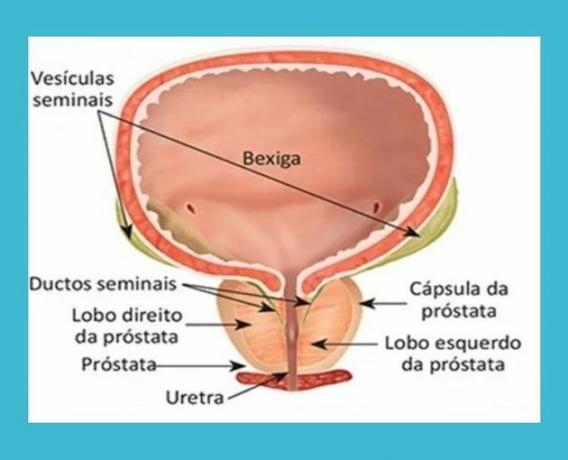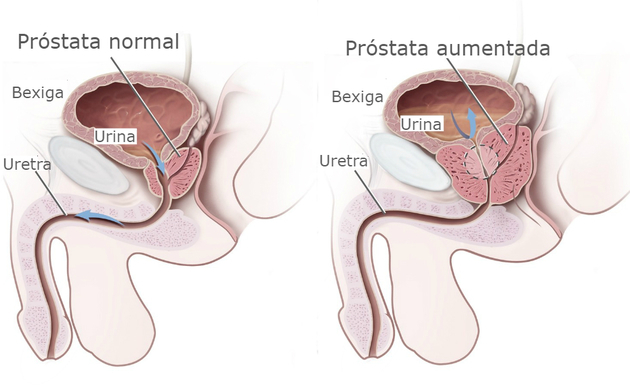The prostate is a gland that is part of the male reproductive system and is located under the bladder. Weighing approximately 20 grams, it is shaped like a walnut.

Prostate function
The function of the prostate is related to the production of a "prostatic fluid", a clear and fluid secretion. This liquid provides the necessary nutrients for the sperm, which in turn are produced in the testicles and give rise to semen.
The fluid produced in the prostate has an alkaline pH and its composition is made up of simple sugars, thus representing between 10 and 30% of the volume of all seminal fluid.
Prostatic fluid has proteins that correspond to 1% of its composition, in addition to comprising proteolytic enzymes and specific antigens, zinc and fibrinolysin, which help dissolve the semen.
To perform its function, the prostate needs male hormones called androgens. The main male hormone is the testosterone, responsible for prostate growth.
prostate anatomy

The anatomy of the prostate is related to its functions. In its interior there is the urethra, which originates from the bladder and prostate, and is called the prostatic urethra. It is associated with two ejaculatory ducts.
In the lower part of the prostate is the rectum, which represents the final portion of the intestine.
Prostate related diseases
The most common diseases of the prostate are related to changes caused by infections or hormones.
Prostate cancer

Prostate cancer is the most common type of cancer among men, affecting about 30% of the male population that develops malignant tumors.
The main symptoms of prostate cancer usually appear, in most cases, when the tumor is already in an advanced stage, so regular clinical examination is indicated.
When symptoms appear, the most common are:
- urge to urinate frequently;
- pain when urinating;
- presence of blood in urine and/or semen;
- bone pain in the region.
Prostatic hyperplasia

Prostatic hyperplasia is popularly known as an enlarged or enlarged prostate, which represents an inflammation.
With advancing age, this change is common, but medical monitoring is needed to control the swelling.
Benign prostatic hyperplasia can be treated with drugs that stimulate prostate muscle relaxation or with the ingestion of hormones. In more extreme cases, surgery is performed to remove the organ.
prostatitis

Prostatitis is a type of infection in the prostate, which is caused by viruses, bacteria or even as a consequence of a urinary tract infection.
The treatment of prostatitis is based on antibiotics and analgesics for pain relief, always with medical supervision.
In more severe cases, when the infection does not decrease with medication, a surgical procedure to remove the inflamed region may be necessary.


